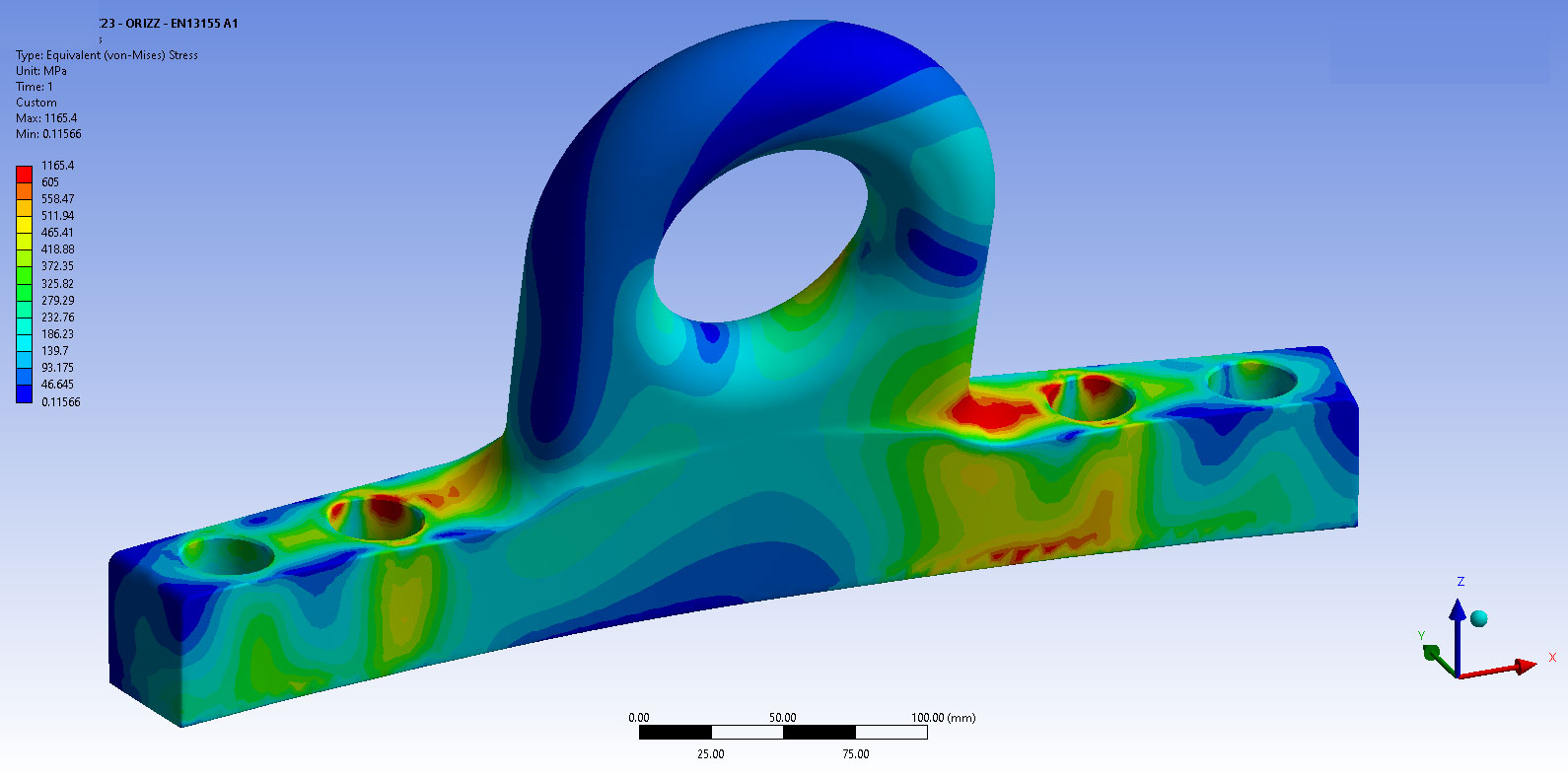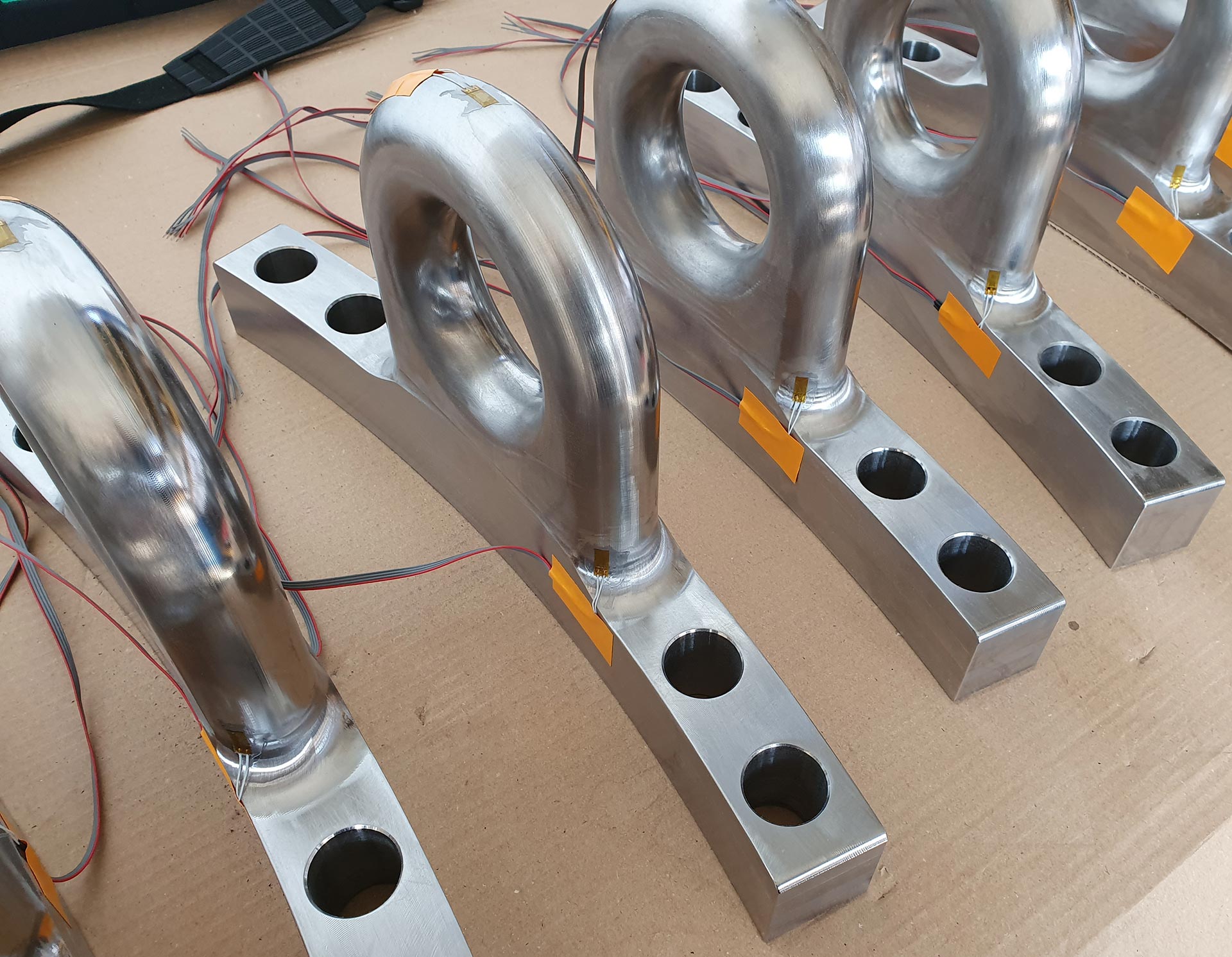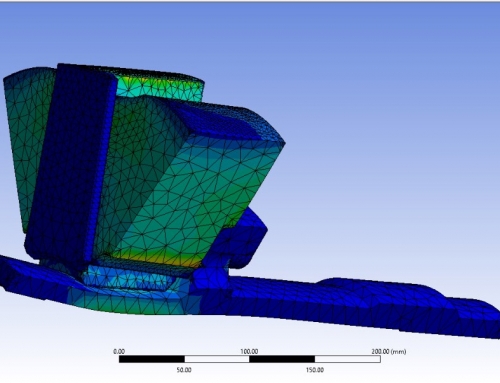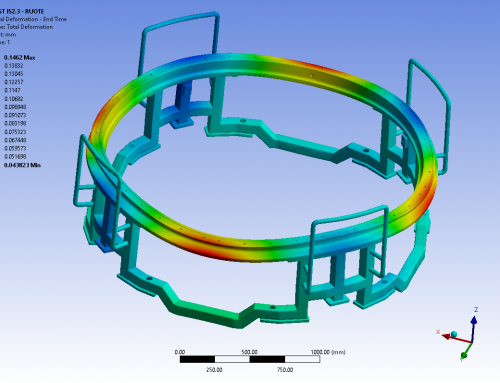Project Description
Category: Lifting & Handling
Description: Heavy lifting eyelets
Materials: Alloy steels
The heavy lifting eyelets are supplied as a series of 4 pieces and used as custom lifting accessories, manufactured to the client’s specific instructions for vertical and horizontal movement of the motors composing the ARIANE and VEGA vectors equipped with respective handling rings.
The heavy lifting eyelet has a large eye, equivalent to a shaped, elongated round section, with a diameter between 40mm and 50mm, with a through-hole between 70mm and 80mm and elevated by a radial slope with a minimum height of 50mm, prepared with 4 through-holes with a diameter of 31mm for passage of M30 screws that restrain the handling rings for motor movement.
In most cases, they are obtained from a single monoblock, extracted from thick sheet metal, from a forged ring or block, in precious material such as 42CrMo4 UNI 10083-3, 39NiCrMo3 UNI 10083-3, 17.4-PH UNI 10083-3, by machining for machine tool chip removal.
The heavy lifting eyelets, if required by the material, are surface treated against corrosion, using a micro-sanding and electrolyte galvanising cycle.
The design complies with the specifications outlined in the client’s specifications, regarding typical working conditions for the individual set of heavy lifting eyelets, for the definition of the interface geometry and the capacity, therefore with EN 13155:2003+A2:2009 for structural verification of the design and testing of the individual model. They are supplied CE marked in compliance with Machinery Directive 2006/42/EC, with a technical file (Design, Structural Testing, Control file during the production phase, Inspection test report, Use and maintenance manual) and APAVE CMP certification.
The lifting eyelets are lifting accessories subject to fatigue cycles, therefore their every detail is cared for in the design and machining phase, paying attention to shape, radii and the surface finish. The external surface treatment of the heavy lifting eyelets can also wear due to use: for this reason, to keep the marking clear and visible of the individual piece, a new indelible marking method was developed, tested and introduced on the latest parts which is indelible and resistant to surface treatments.




